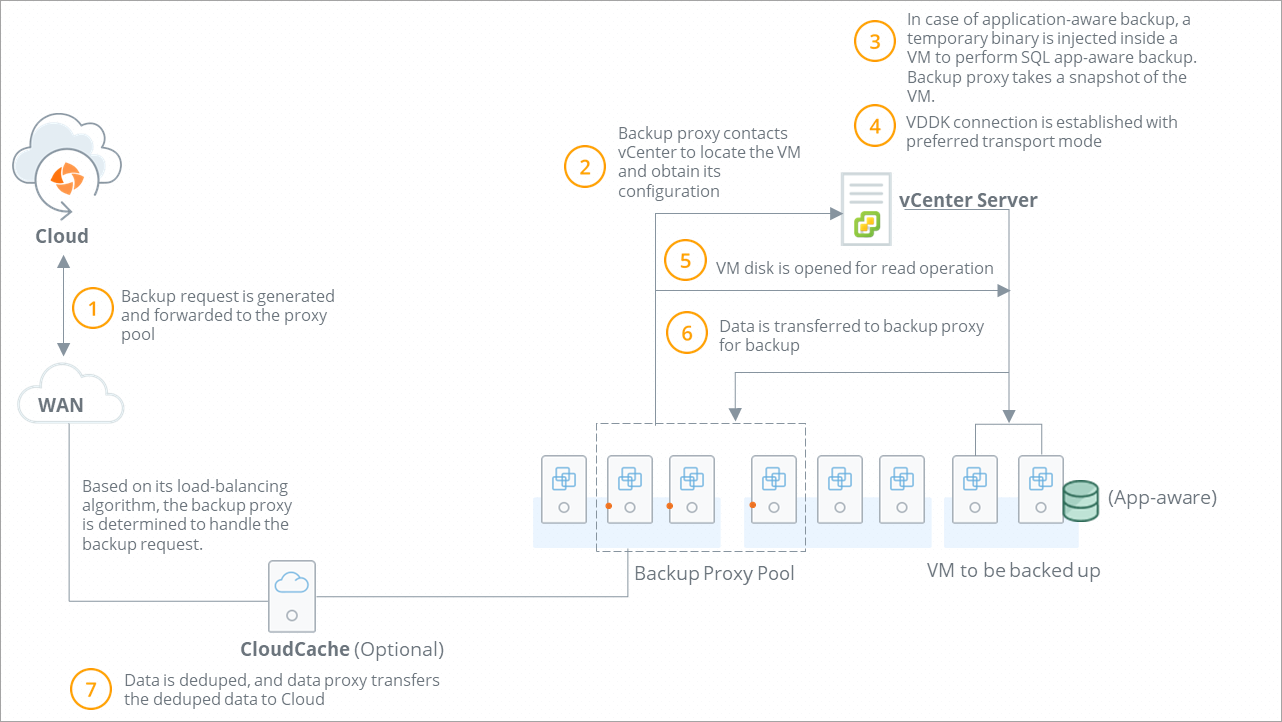VMware virtual machine backup workflow
 Business
Business  Enterprise
Enterprise  Elite
Elite
Overview
Druva performs backup on virtual machines based on the schedule defined in the backup policy, that virtual machine is a part of or an on-demand backup triggered from Management Console. This involves the interaction of Druva components and VMware components.
The following diagram depicts the data flow at the time of backing up virtual machines.

Virtual machine backup workflow
| Step | Operation |
|---|---|
|
Step 1 |
Virtual machine backup request is initiated based on,
Druva forwards the backup request to the backup proxy pool.
|
|
Step 2 |
|
|
Step 3 |
In case of application-aware backup:
The backup proxy queries the ESXi hypervisor or the vCenter server to create VM recovery points that contain VMDK files and the VMX files of the virtual machines. Ensure that enough storage is available on the local datastore for the VM recovery point. The backup proxy uses:
|
|
Step 4 |
Backup proxy establishes a VDDK connection to the VM recovery point using a transport mode to read the VM data. |
|
Step 5 |
Backup proxy starts reading the virtual machine recovery point. |
|
Step 6 |
The backup proxy reads the virtual machine recovery point and prepares to send the backup data to CloudCache (if configured) or Druva Cloud. |
|
Step 7 |
Backup proxy transfers the deduplicated backup data to the Druva Cloud. After the transfer completes, the backup proxy deletes the virtual machine recovery point. |

